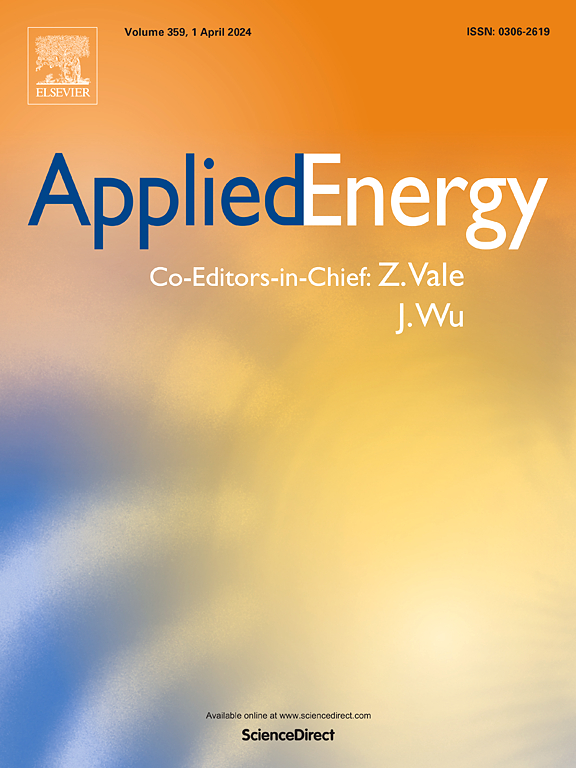Experimental demonstration and validation of tubular solar cavity receivers for simultaneous generation of superheated steam and hot air
IF 10.1
1区 工程技术
Q1 ENERGY & FUELS
引用次数: 0
Abstract
Cavity receivers with absorber tubes inside the solar tower systems are the most studied and suitable concept for supplying such hot steam and air due to its design flexibility and efficiency. However, a receiver concept of simultaneously generating high-temperature steam and air has not been experimentally studied on scales beyond laboratory scale. Therefore, our study focused on the experimental demonstration for such receiver concept and the validation of the developed numerical model. Experimental results demonstrated that the proposed receiver concept (i.e. a cavity receiver with cylindrical and conical helical tubes) with 70 kWth nominal power can simultaneously produce high-temperature steam (811 °C) and air (863 °C) with standard deviations of less than 3 °C (outlet temperature), 3 kPa (outlet pressure), and 0.2 kg/h (mass flow rate). Comparison of experiments and simulations proved to be in very good agreement, with errors of less than 10 %. The results presented here provide a basis for future scale-up and demonstrate the high potential of combining concentrating solar thermal technology with high-temperature electrolysis for the mass production of green hydrogen.
同时产生过热蒸汽和热空气的管状太阳能腔体接收器的实验演示和验证
在太阳能塔系统内带吸收管的腔体接收器由于其设计的灵活性和效率是研究最多和最适合的概念,以提供这种热蒸汽和空气。然而,同时产生高温蒸汽和空气的接收器概念尚未在实验室规模以外的规模上进行实验研究。因此,我们的研究重点是对这种接收器概念进行实验验证和所开发的数值模型的验证。实验结果表明,所提出的接收器概念(即圆柱形和锥形螺旋管的腔式接收器)在70 kWth的标称功率下可以同时产生高温蒸汽(811℃)和空气(863℃),其标准偏差小于3℃(出口温度),3 kPa(出口压力),0.2 kg/h(质量流量)。实验与仿真结果的比较表明,两者吻合良好,误差小于10%。本文提出的结果为未来的规模扩大提供了基础,并展示了将聚光太阳能热技术与高温电解相结合以大规模生产绿色氢的巨大潜力。
本文章由计算机程序翻译,如有差异,请以英文原文为准。
求助全文
约1分钟内获得全文
求助全文
来源期刊

Applied Energy
工程技术-工程:化工
CiteScore
21.20
自引率
10.70%
发文量
1830
审稿时长
41 days
期刊介绍:
Applied Energy serves as a platform for sharing innovations, research, development, and demonstrations in energy conversion, conservation, and sustainable energy systems. The journal covers topics such as optimal energy resource use, environmental pollutant mitigation, and energy process analysis. It welcomes original papers, review articles, technical notes, and letters to the editor. Authors are encouraged to submit manuscripts that bridge the gap between research, development, and implementation. The journal addresses a wide spectrum of topics, including fossil and renewable energy technologies, energy economics, and environmental impacts. Applied Energy also explores modeling and forecasting, conservation strategies, and the social and economic implications of energy policies, including climate change mitigation. It is complemented by the open-access journal Advances in Applied Energy.
 求助内容:
求助内容: 应助结果提醒方式:
应助结果提醒方式:


